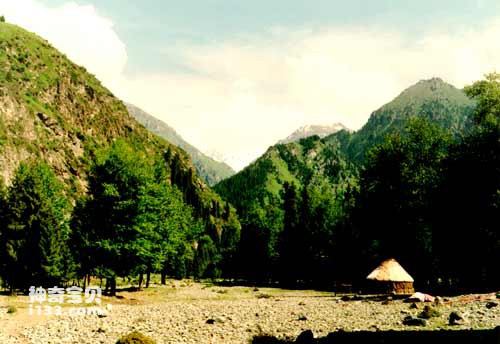Fish cannot live without water, vegetation cannot live without the sun, bees need nectar, and germs need a host. The survival of any living thing on earth is inseparable from the environment and must be coordinated with the environment. The environment provides living resources, growth conditions and breeding places for organisms. While organisms are utilizing resources, they are also changing the environment. Only organisms that adapt to the environment can develop in a balanced way.
There are many types of living things, and the environments they require vary widely. Environmental conditions vary from place to place, and resources vary in abundance. The environment in which living things depend can be divided into two categories: the inorganic environment composed of inanimate factors such as water, light, and heat, and the organic environment composed of living factors such as food, germs, pests, and natural enemies.

bees collecting nectar
The inorganic environment is the basic environment for biological survival. Animals ultimately rely on plants as a source of nutrition, and plants rely on natural resources such as sunlight, water, and fertilizer ingredients to grow and reproduce. The relationship between organisms and the inorganic environment is reflected in two aspects: As far as organisms are concerned, the environments required and adapted to by various organisms are different. Algae, weeds, trees, birds, reptiles, and beasts all have their own adaptations. conditions; as far as the environment is concerned, it contains a variety of environmental factors. These environmental factors mainly consist of the following aspects:
Light factors, including heat and temperature factors, are the most important to plants;
Water factors, including many factors related to water supply and humidity factors, are of decisive significance to plants;
Geoscience factors, including geological landforms, height, depth, latitude and other address geographical factors related to mountains, land, rivers, and oceans, which have decisive significance for the distribution of organisms;
Climatic factors are decisive for the periodic fluctuations of biological life and reproduction;
Soil factors, including geology, structure, supply of water, fertilizer, gas, heat in the soil, and factors related to material circulation, which have a direct impact on plant life;
Chemical factors include nutrients, organic matter content, salinity and acidity, trace elements and other factors in water and soil. In addition, food factors and nutritional factors are also chemical factors.
The various factors mentioned above vary in quantity, degree, and fluctuation range in the environment. For any kind of organism, the quality of the inorganic environment is good or bad, and the organism's suitability or discomfort with it mainly depends on the nature of the factors and the magnitude of the main factors and the size of their variation range.

mountains
Among many factors, there is often one factor that plays a decisive role in the survival or distribution of a certain species. Such factors are called limiting factors. For example, for many marine organisms, the salt content (salinity) of seawater is their limiting factor; for some tropical plants, temperature is their limiting factor.
The organic environment refers to various other organisms related to a certain organism that live in the same community.
Any living thing has a more or less interdependent and mutually restrictive relationship with other species, resulting in various types of interspecific relationships between species. These relationships are mainly divided into the following types: 1. Neutral; 2. Competition; 3. Cooperation; 4. Commensalism; 5. Symbiosis; 6. Parasitism; 7. Predation; 8. Confrontation. Some kind of interspecific relationship between two or several species is often the result of species evolution or even co-evolution of various species.
animal tags: Bees fish birds reptiles
We created this article in conjunction with AI technology, then made sure it was fact-checked and edited by a Animals Top editor.